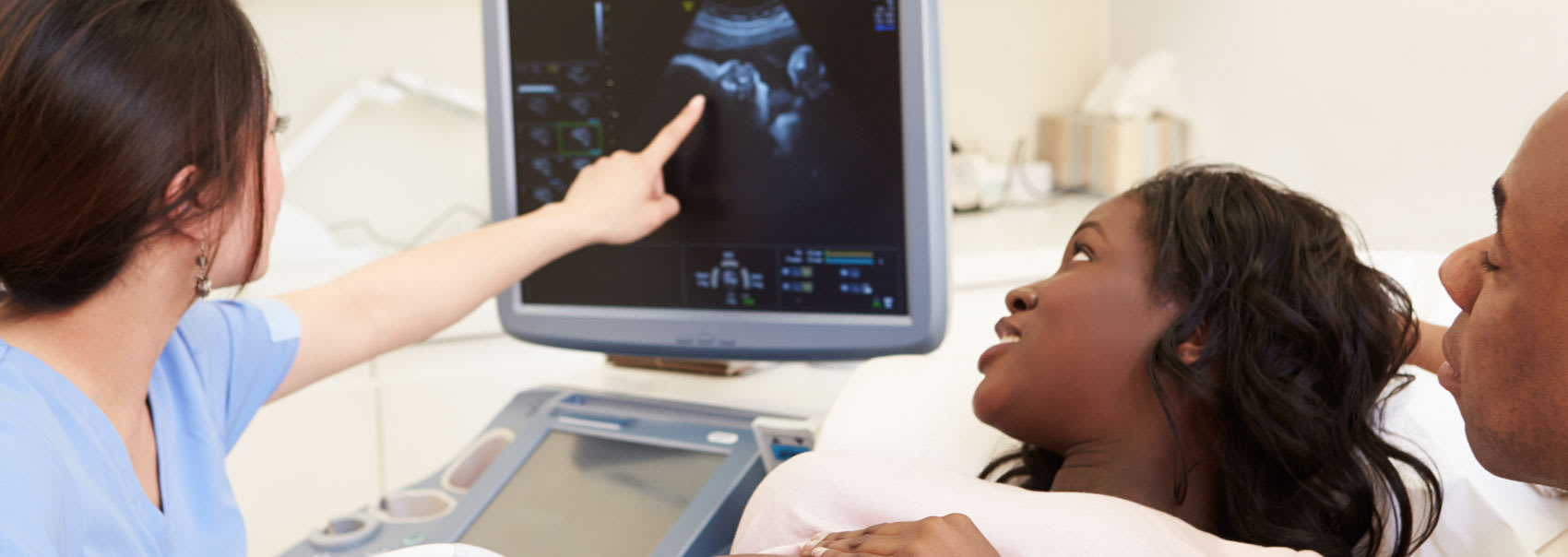Wondering about Doppler ultrasound procedures at Premier Imaging? Our Ottawa radiologists explain the purpose of this type of ultrasound, along with what to expect for preparation, procedure and follow-up.
What is a Doppler ultrasound?
A Doppler ultrasound uses high-frequency sound waves to measure the amount of blood flowing through your veins and arteries - typically those supplying blood to your arms and legs.
Why would I need a Doppler ultrasound?
A Doppler ultrasound may be used as part of a blood flow study (also referred to as vascular flow study), which can identify problems with flow in a blood vessel or artery. This can help your doctor diagnose and treat a range of conditions, from poor circulation to blood clots or injuries to a blood vessel.
This test allows us to collect important data about blood flow in your major veins and arteries. If blood flow is reduced or obstructed in narrow areas of the arteries, this may eventually lead to a stroke. Being able to detect these conditions early and predict potential problems may help to avoid life-threatening events.
Your doctor may order a Doppler ultrasound exam if you show signs of:
- Arteriosclerosis, a hardening and narrowing of the arteries that supply blood to the legs and feet
- Deep vein thrombosis (DVT), which happens when a blood clot develops in a vein deep within your body (typically in the leg or hip regions)
- Superficial thrombophlebitis, which occurs when a blood clot in a vein just below the skin’s surface causes the veins to become inflamed
- Thromboangiitis obliterans, a rare disease that causes blood vessels in hands and feet to become swollen and inflamed
- Vascular tumors of the arms or legs
With a Doppler ultrasound, we can measure blood pressure within your arteries and see how much blood is currently flowing through your veins and arteries.
How should I prepare for my Doppler ultrasound?
Generally, a Doppler ultrasound requires no preparation. If you’re a smoker, you may need to stop smoking for several hours prior to your test, since smoking causes your blood vessels to narrow. This may impact your test results.
What should I expect during my ultrasound?
This pain-free, risk-free procedure doesn’t expose you to any harmful radiation. You’ll likely feel little to no discomfort. Remove jewellery, clothing and any other objects from the area to be studied.
The technologist or radiologist will instruct you to lie down on the exam table, then a handheld device called a transducer will be covered with a water-soluble gel. The transducer directs high-frequency sound waves to the arteries or veins being studied.
You may have blood pressure cuffs on various areas of your body (calf, thigh, ankle, arm) to compare the blood pressure in different parts of your limbs.
The transducer presses against your skin and moves along your arm or leg, sending sound waves through your tissues and blood vessels and back to a computer, where they’re recorded and converted to a picture or graph. The image that appears on a monitor shows the blood flowing through your veins and arteries. As blood flow is detected, you may hear a wooshing sound.
Which factors may compromise my test results?
Some factors can compromise the results of a Doppler ultrasound test, meaning you'll have to return to our clinic for the test to be done again. These factors may include:
- Cardiovascular disease
- Severe obesity
- Smoking less than an hour before the test
- Cardiac arrhythmias, dysrthmias or irregular heart rhythms
How long will this exam take?
A Doppler ultrasound exam takes about one hour.
What happens after the exam?
Depending on signs and symptoms you’re experiencing, you may be instructed to do some mild exercises after the procedure. Generally, you’ll be able to resume normal activities right away unless your doctor notifies you otherwise.
Normal test results indicate that the blood pressure in your arteries is normal and that there are no blockages or narrowing. Abnormal blood flow, including closing or narrowing of arteries, may be caused by:
- Damaged blood vessels, which can result in poor circulation
- Blood clots in an artery or vein
- Closing of a vein (venous occlusion)
- Blocked arteries (caused by cholesterol buildup)
Your results will be sent to your doctor, who will review the results with you. If issues are discovered, your doctor will explain them and order any additional tests you may need.

